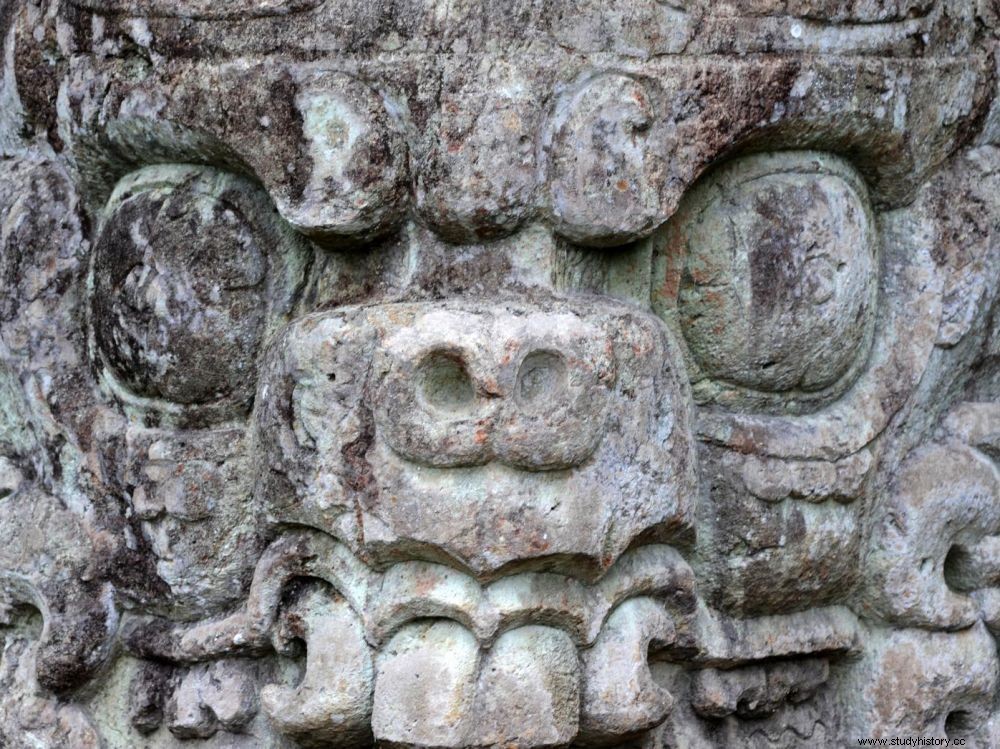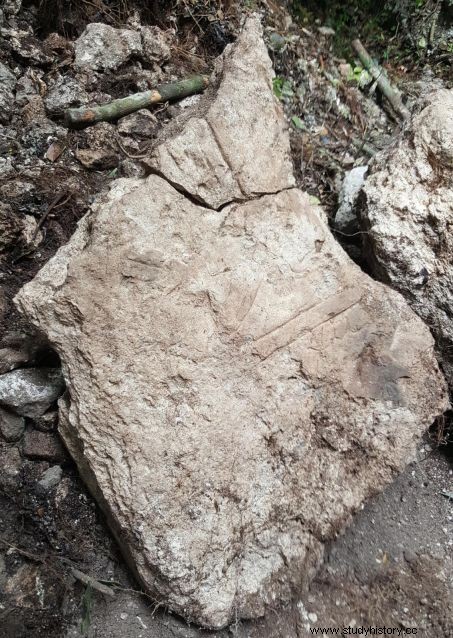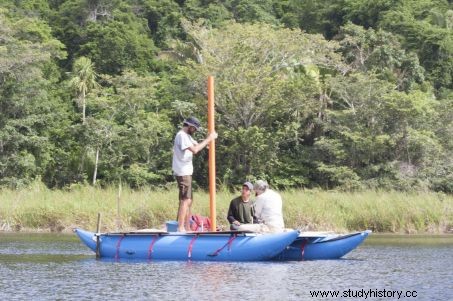A new concept of "total war" has just been defined concerning the Maya of the classical period (250-950). Paleoenvironmental and epigraphic studies dispute the role that a sudden escalation of violence in IX-X e could have played centuries, to justify the decline of the Lowland Maya. On the contrary, the war would have been permanent during the 700 years of the apogee of this civilization. And probably long before.

Ornament from the Mayan site of Copan, on the border of Honduras and Guatemala. The city was abandoned around the 10th century.
The Maya socio-economic "collapse" at the end of the Classic period (950) is generally attributed to a series of hypotheses ranging from a weakening due to repeated drought episodes over several years; overexploitation of the environment; through socio-political transformations; and above all, an intensification of violence between 800 and 950, resulting in an increase in conflicts between cities... An article published in the journal Nature Human Behavior August 5, 2019 returns to this last postulate. Rather than the ritualized, one-off wars with rules of engagement limited to the search for (preferably high-ranking) captives, to sacrifice them or to obtain ransoms in exchange, as traditionally described, new elements reveal rather extremely destructive practices. of "total warfare", throughout the Classic period (250-950) "when both civilian and military resources were targeted, sometimes resulting in the complete annihilation of cities ".
A genuine scorched earth policy. "These received ideas have been challenged by recent data collected in sedimentology and epigraphy “, explains David Wahl, assistant professor of geography at the University of Berkeley and researcher at the USGS in Menlo Park, California (United States), the main author of the publication. And to understand this complex history, it must return to the epigraphic transcription of the texts of two stelae found in two distant cities... and sediment samples.

3D photogrammetric survey of the Stele of Witzna. © Tokovinin
In Witzna - where David Wahl works in the province of Péten (Guatemala) -, an inscription dedicated to the lord of "Balham Job", has made it possible to identify the true surname of the city. However, this Mayan name of Bahlam Job was not unknown... In Naranjo, 32 km south of "Witzna/Bahlam Job", the symbol puluuy ("it burns") appeared on a stele where it was told that in 697, the city of Bahlam Job had been attacked and burned (twice)! A date that also corroborated other data related to the destruction of this city.

Remains of burnt monument found on the site of Witzna. © Francisco Estrada-Belli
A thick layer of charcoal corresponding to the "gigantic and massive" fire of Bahlam Job has indeed been found in "corings" carried out in the depths of the nearby lagoon of Ek'Naab. Episode which was followed by a spectacular decline in human activity in this city.

Lidar survey of the ceremonial complex of Witzna and the adjoining lagoon of Ek'Naab (white spot). ©Francisco Estrada-Belli, Pacunam, Tulane University
"The level of coal dated from 690 to 700 coincides perfectly with the destructions of May 21, 697 reported by the stele of Naranjo ", rejoices David Wahl. " For nearly 20 years, the discovery of the hegemonic attempts of the great Mayan cities such as Tikal or Calakmul, between 500 and 700, should have already made the Mayanist community understand that the war among the Maya had not been a mere affair of skirmishes and raids ", declared Dominique Michelet, director of research emeritus at the CNRS, joined by Sciences et Avenir.

David Wahl, taking sediment samples from Ek'Naab Lagoon, from an inflatable platform. © Francisco Estrada-Belli, Tulane University
Attached to the laboratory of UMR 8096, Archeology of the Americas, the eminent specialist made a point of specifying:"Introduce the concept of 'total war' by rotating the entire article of Nature Human Behavior around this one seems questionable to me, however, when we learn 'in fine' that the attack of May 21, 697 of Balham Job, -although marked by destruction and traces of fire on many structures of the site - did not wipe out the local dynasty. This seems to have held in place for almost a century longer! Nevertheless, to provide proof that in the Classic period the war among the Mayas was something devastating, - in addition to the importance of cross-referencing environmental and archaeo-epigraphist data for more results -, is an essential contribution ", concluded the French Americanist, who is taking part in research in this same region of Guatemala (read Sciences et Avenir n° 869/870 currently on newsstands ).
Recent Lidar surveys (Pacunam project) have completely changed the vision we had of the Mayan world. The presence of defensive walls has been detected around certain cities such as El Zotz or Tikal; with military architectures ignored until then, proving the extremely bellicose behavior of the Mayas (often presented as less acrimonious than the Aztecs…). So many attestations of large-scale conflicts and continuous violence perpetrated for centuries, which these results confirm.
